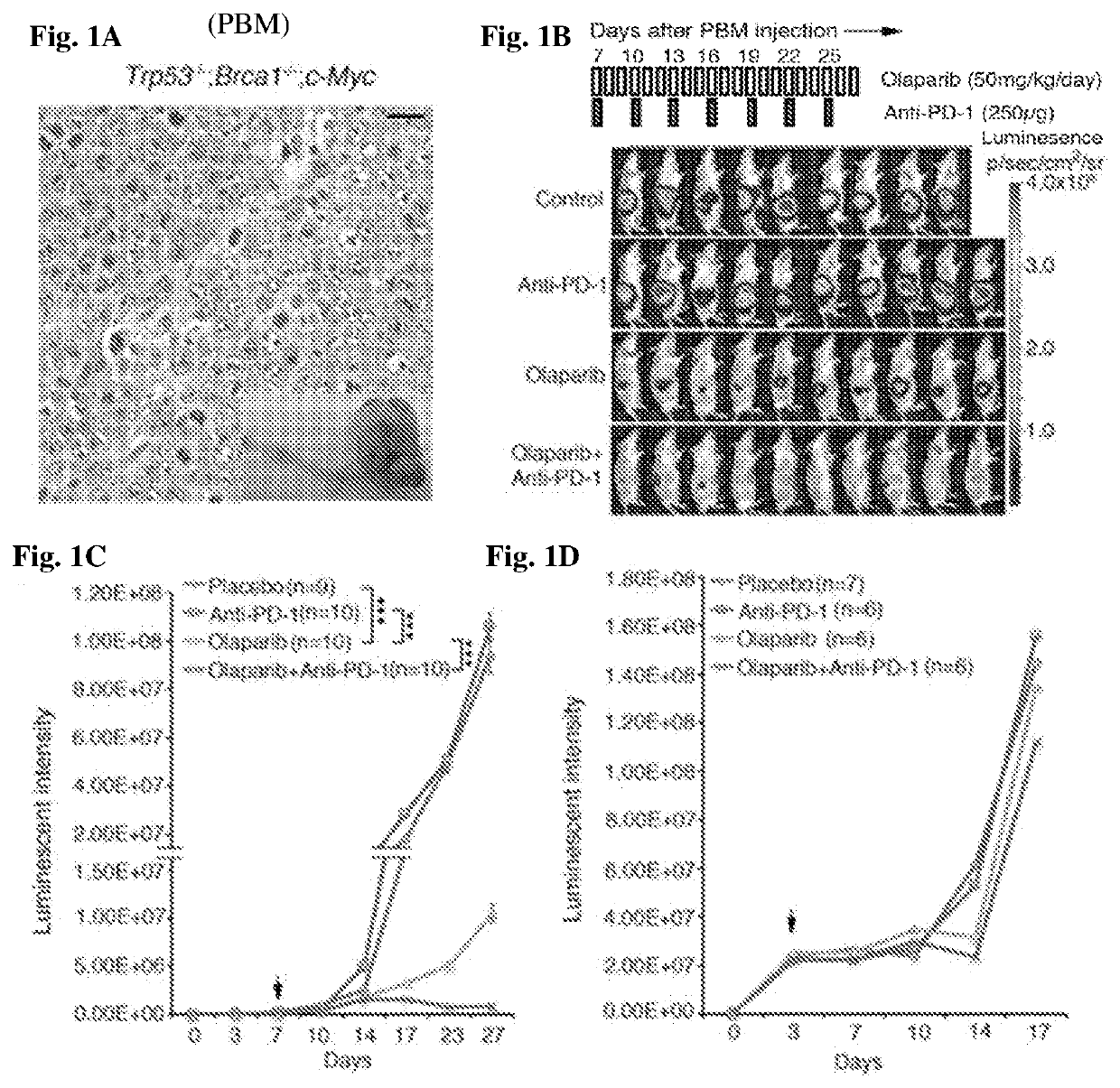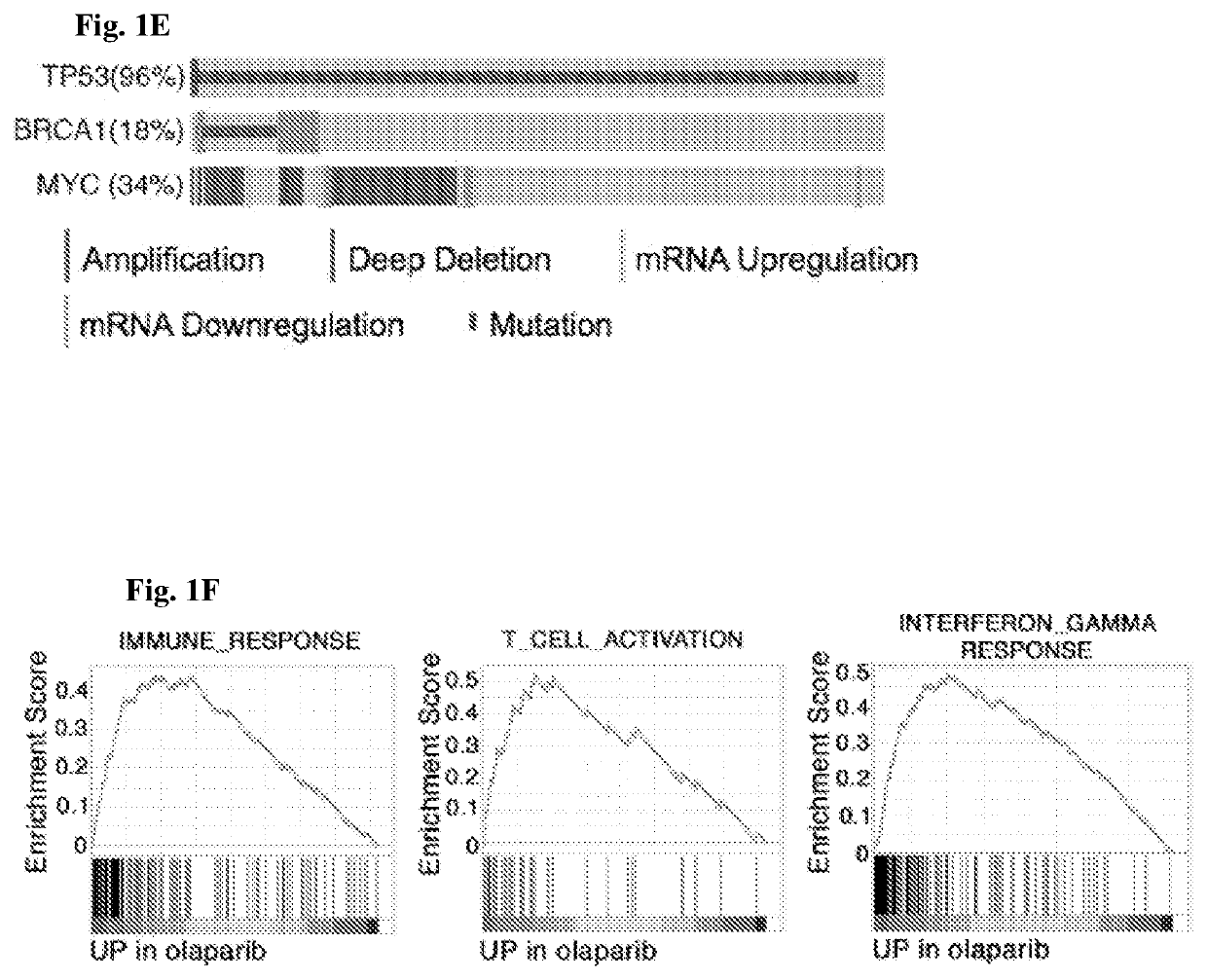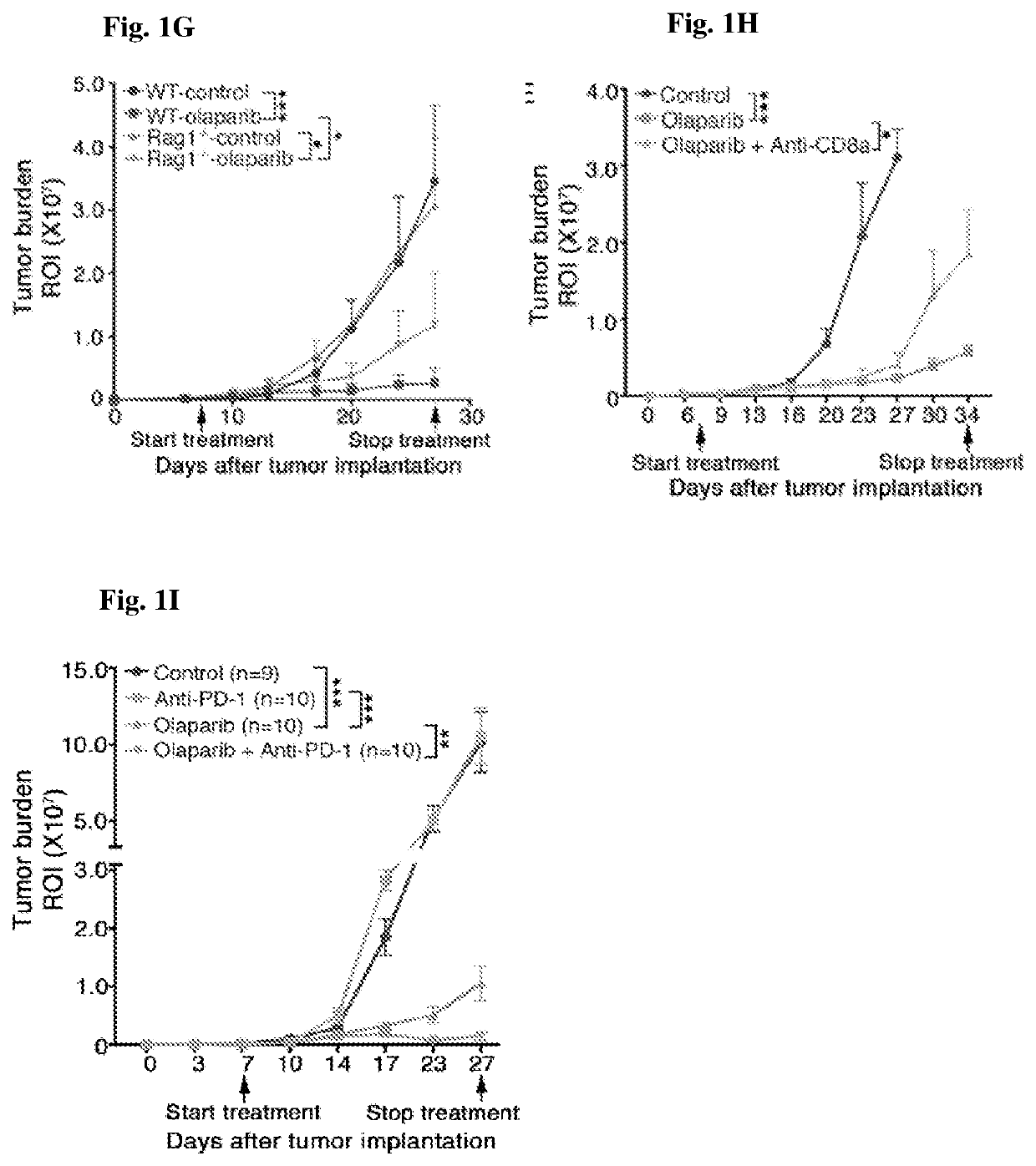Cancer vaccine compositions and methods for using same to treat cancer
a technology of cancer vaccine and composition, applied in the direction of drug composition, antibody medical ingredients, vertebrate antigen ingredients, etc., can solve the problem of unclear vivo mechanism(s) underlying the therapeutic efficacy of this novel class of drugs, and achieve the effect of inhibiting growth
- Summary
- Abstract
- Description
- Claims
- Application Information
AI Technical Summary
Benefits of technology
Problems solved by technology
Method used
Image
Examples
example 1
and Methods for Examples 2-11
[0232]a. Experimental Model and Subject Details
[0233]i. Mice
[0234]All animal experiments described herein were performed according to the animal protocols approved by the DFCI Institutional Animal Care and Use Committee. Brca1loxP / loxP mouse line was kindly provided by Dr. Jos Jonkers's laboratory (Netherlands Cancer Institute, Amsterdam, The Netherlands). Trp53loxP / loxP mouse line was obtained from National Cancer Institute Mouse Repository. PtenloxP / loxP mouse line was kindly provided by Dr. Hong Wu (Peking University, Beijing, China). All these mouse lines were backcrossed for more than 10 generations to the FVB / N background before intercrossed to make homozygous mouse lines. STING knock out mice (C57BL / 6J-Tmem173gt / J, Stock No: 017537) were purchased from the Jackson Laboratory.
[0235]ii. Cell Lines
[0236]The 293T cell line was obtained from the American Type Culture Collection (ATCC, Manassas, Va.) and cultured in DMEM supplemented with 10% FBS and 10...
example 2
ic Efficacy of PARP Inhibition for HR-Deficient Ovarian Cancer was Augmented by the Addition of Immune Checkpoint Blockade
[0266]Therapeutic efficacy of olaparib in Brca1-deficient ovarian tumor involves T cell-mediated cytotoxicity, which is further enhanced by the addition of PD-1 blockade. The current understanding of molecular mechanism(s) underlying PARP inhibition for BRCA-deficient tumor is primarily described as cell autonomous synthetic lethality (O'Neil et al. (2017) Nat. Rev. Genet. 18:613-623). To explore the involvement of immune responses regarding PARP inhibition in HR-deficient cancer, a pair of syngeneic genetically engineered mouse models (GEMMs) of high-grade serous ovarian cancer (HGSOC) in the FVB background driven via either concurrent loss of p53 and Brca1 and overexpression of c-Myc (termed PBM, an HR-deficient model) or concurrent loss of p53 and Pten and overexpression of c-Myc (termed PPM, an HR-proficient model) was generated to reflect oncogenic events fr...
example 3
Treatment Triggered a Robust Antitumor Immunity in the PBM Tumor Microenvironment Involving Both Lymphoid and Myeloid Derived Cells
[0268]Oliparib provokes robust intratumoral and systemic immune response in Brac1-deficient ovarian tumors. An antitumor immune response elicited by olaparib in Brca1-deficient tumors prompted the study to assess tumor infiltrating immune cells in PBM-bearing mice upon treatment. To determine the immune response in the tumor microenvironment upon olaparib treatment, tumor-infiltrating immune cells from PBM-bearing mice treated with olaparib, PD-1 antibody alone, or their combination, were analyzed. Increased immune cell (CD45+) infiltration into tumor was observed upon olaparib, but not PD-1 antibody treatment (FIGS. 2G and 3A). Further analysis revealed that olaparib treatment alone significantly increased the number of intratumoral CD4+ and CD8+ T cells (FIGS. 3C, 3D, and 4A), but also reduced expression of PD-1 / TIM-3 and PD-1 / Lag3 co-inhibitory recept...
PUM
| Property | Measurement | Unit |
|---|---|---|
| Magnetic field | aaaaa | aaaaa |
| Size | aaaaa | aaaaa |
| Volume | aaaaa | aaaaa |
Abstract
Description
Claims
Application Information
 Login to View More
Login to View More - R&D
- Intellectual Property
- Life Sciences
- Materials
- Tech Scout
- Unparalleled Data Quality
- Higher Quality Content
- 60% Fewer Hallucinations
Browse by: Latest US Patents, China's latest patents, Technical Efficacy Thesaurus, Application Domain, Technology Topic, Popular Technical Reports.
© 2025 PatSnap. All rights reserved.Legal|Privacy policy|Modern Slavery Act Transparency Statement|Sitemap|About US| Contact US: help@patsnap.com



